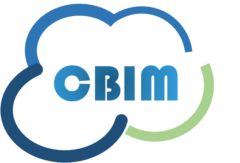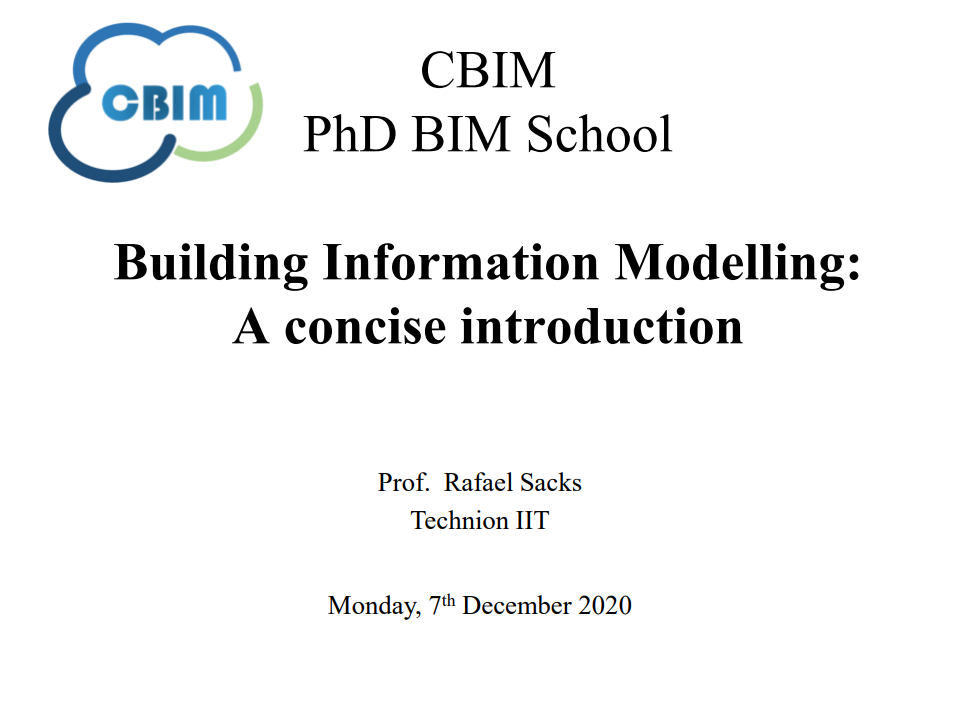CBIM - European Training Network
BIM BasicsThe first BIM School, organized by the Cloud-based Building Information Modelling (CBIM) European Training Network (ETN) , took place from 7th to 11th of December 2020 and was virtually hosted by the University of Cambridge. At the event, academic and industry experts delivered several lectures on BIM fundamentals and research methods, exploring BIM tools, data models, data exchange and cross-sector interoperability topics. The first learning session was on the topic of "Building Information Modelling: A concise introduction". Given that the students’ backgrounds were quite diverse, firstly, the evolution and history of BIM was explored. In the beginning, construction during ancient times was managed by verbal communication. Over the years, manual drawings and sketches printed in two-dimensions (2D) started coming into use. Since then, this approach has come a long way, and evolved into what the architecture, engineering, and construction (AEC) industry are using today. Current trends are based on a computerized and digital representation of assets within a project. These forms of representation of the new era allows us to go beyond visualisations in multi-perspective, three-dimension (3D), to storing non-graphical information, generating various types of documentation such as schemas, schedules, specifications and time series data, and finally enhancing collaborative workflows between stakeholders. Although there have been substantial technological developments in computer-aided design (CAD), it is not Building Information Modelling, only a conceptual part of it. Thus, two questions came up: What is Building Information Modelling? and What are the common principles in Building Information Modelling? (To get more insight on how the first concept of BIM emerged, check here). A BIM model can be defined as a product, which represents (1) a single data model enriched with diverse information, and (2) a process, which compiles on the whole project life-cycle. As such, BIM refers to an object-oriented model rich in data that can represent physical and functional characteristics of a building throughout its life cycle in a consistent central structure, allowing data to be seamlessly analysed, visualised, detected for clashes, verified for compliance with building codes and, most importantly, integrated between the various stakeholders. BIM development can be seen as a progression from paper documentation and 2D and 3D models to an integrated and interoperable set of federated computer models capable of delivering building lifecycle management. Each step in this progression represents one level of BIM maturity. These are classified by the degree of application of information technology: Level 0 (CAD based and low collaboration), Level 1 (2D/3D and partial collaboration), Level 2 (4D/5D and full collaboration and Level 3 (6D and full integration). The BIM development stages along with maturity level are shown in Figure 1 [1]. While the current maturity level of BIM varies between BIM Level 0 and Level 2, the common ambition within the industry today is to achieve BIM Level 3, also known as "Open BIM". At this level, a single cloud-based project model is acquired owing to the accessibility and adjustability in the management of digital data models, which ultimately achieves (1) seamless collaboration, (2) reliable data exchanges, and (3) effective interoperability between BIM-based applications.
The first learning session of CBIM school, hosted by the University of Cambridge, was given by Rafael Sacks on the topic of “Building Information Modelling: A concise introduction”. References: [1] Eastman, C. M. et al., eds (2011), BIM handbook: A guide to building information modeling for owners, managers, designers, engineers and contractors, 2nd edn, Wiley, Hoboken, NJ.
|
|||
|






